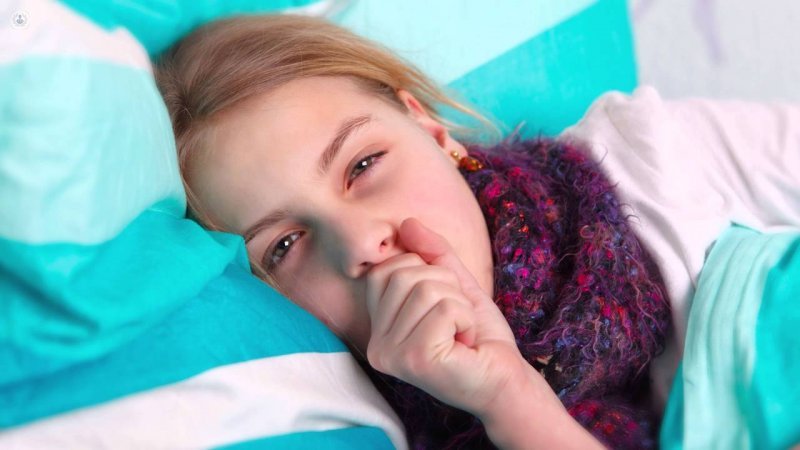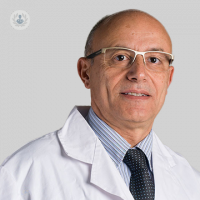recurrent bronchitis in children under 3 years
Written by: It is common for children under 3 years have wheezing or "beepers". In fact, they are a frequent reason for consultation in Pediatrics. Up to 30% of children have wheezing at some point in their lives. The frequency has increased in recent considerably and in children under 6 years, has gone from 6% to 10%.
It is common for children under 3 years have wheezing or "beepers". In fact, they are a frequent reason for consultation in Pediatrics. Up to 30% of children have wheezing at some point in their lives. The frequency has increased in recent considerably and in children under 6 years, has gone from 6% to 10%.
It comes with four of:
- recurrent cough
- breathlessness
- requiring repeated drownings go to the emergency room
- "Beepers" or wheezing that parents hear without pediatric auscultation
Specialists emergency services of hospitals diagnose it in the discharge report, such as obstructive bronchitis or wheezy bronchitis, asthmatic bronchitis or sometimes, childhood asthma crisis.
The questions that parents often ask are three fundamentally: what should wheezing, what can I do to avoid them and if your child, when he grows up , will asthmatic.
What bronchitis should
Viruses cause colds are usually the most common trigger for bronchitis with "whistles" or sibilant. Bronchus undergoes a more or less persistent inflammation and this results in coughing, shortness of breath and bronchospasm.
The pediatrician preclude the child has no known causes of recurrent wheezing source known as:
- congenital malformations of bronchus or lung
- CLD
- cystic fibrosis
- vascular rings to compress the trachea or bronchi
- bronchiectasis or abnormal dilation of the bronchus
- gastroesophageal reflux
- bronchial foreign body after episodes of choking on food or other objects
- immunodeficiencies
- bronchial cilia abnormalities
What to do to prevent bronchitis and treatment
The pediatrician should practice a study where the child has more than three crises of different obstructive bronchitis.
It may be indicated to practice a chest X - ray, a test of sweat, blood tests, Allergy studies in over 3 years (Prick-test forearm) and other examinations, according to intensity, frequency and complications of bronchitis.
Depending on your symptoms, the analytical results and performed examinations, diagnosis phenotype of each child it is made. Not all children who receive the famous inhaled nebulizer are equal. And although for the treatment of inhaled salbutamol crisis applies, sometimes oral corticosteroids are indicated in short cycles and antibiotics if respiratory superinfection.
Preventive treatment will not always be the same. It may be indicated preventive treatment with a particular drug orally, but sometimes also inhaled corticosteroids or a combination of both. Sometimes also different associations are made and sometimes none, since there is a possibility that not respond to preventive therapy. In these cases the solution is to prevent colds and, in some cases, can only be achieved if they fail to attend daycare.
The pediatrician should assess each case individually, helping many parents in the study, assessment and understanding of what happens to the lower. No should not be compared with other little children. It should also be monitored and calendar of events and responses to treatment and prevention.
My son has bronchitis: will asthmatic most?
There are five studies tracking children since they are newborns to adulthood. This has enabled set 4 phenotypes or clinical forms of children with recurrent wheezing, which will allow us to know if the child / to suffer asthma when you reach adulthood:
1) Sibilants transient processes. Children present "whistles" during the first year of life. It may be before or after bronchiolitis this (if after respiratory syncytial virus bronchiolitis winters present them more frequently). Most tend to disappear at 3 years but others persist up to 6 years. Usually nonatopic without personal or family history of atopy children (genetic predisposition to allergy). In this group are risk factors smoking by the mother during pregnancy, being male, prematurity, the presence of older siblings and day care attendance, which facilitates the transmission of viral infections.
2) persistent recurrent wheezing in nonatopic children. Manifest during the first year of life, often after respiratory syncytial virus bronchiolitis and may persist until the time the child / a reaches puberty. It affects equally to boys than girls, who often have no demonstrable allergies and bronchial hyperreactivity improves with age. The spirometry lung function is normal.
3) wheezing in atopic or allergic children. They usually start after year of life and in some cases, after 3 years of age. Predominates in males. Studies by the allergist are positive and often, children also have atopic dermatitis and / or food allergies, especially to eggs. There is also a family history of atopy, most often the mother. Lung function can be altered over time and should be practiced periodically if Spirometry suffer recurrent obstructive bronchitis.
4) recurrent and severe intermittent wheezing. It occurs in children under 3 years or infants (under one year) with major crises of bronchitis that forced to seek emergency care often are admitted often and in the periods between crises, they are without symptoms and make normal life. Usually allergic children with a history of atopic dermatitis, egg allergy and positive skin tests to pneumoallergens. It would be similar to the previous group but in children under 3 years there is a predictive index to take more seriously recurrent wheezing. In this sense, should be assessed whether there is asthma in any of the parents (especially the mother) or atopic dermatitis, allergic rhinitis in addition to the child, sibilant not occur after colds and blood analysis with eosinophilia of more than 4%. Tables should be evaluated by an allergist and / or child pulmonologist, in addition to monitoring the crisis by the pediatrician.
Moreover, there are other phenotypes that have been known over the years. Thus, there are girls who begin their crises during adolescence. In other cases there are girls who begin asthma episodes with the effort, exercising, on 8-10-12 years. There are also skiers who only have crisis when are cold and make efforts in the Nordic ski on certain days, with a degree of specific humidity and cold.
Depending on age, sex, genetic predisposition, environmental exposure and personal and family history variables phenotypes appear with the child and time. Children under 3 years worry more because of his young age and the start so early, during the first year of life. Asthma remains a disease with many questions.


